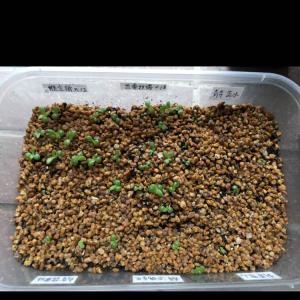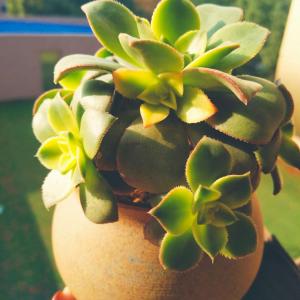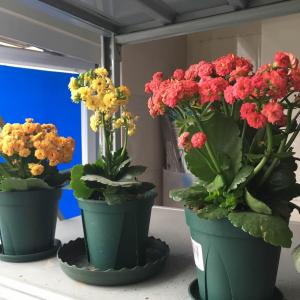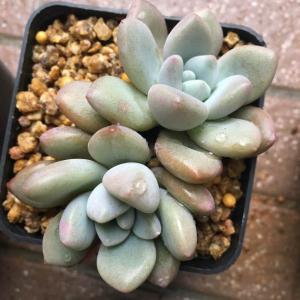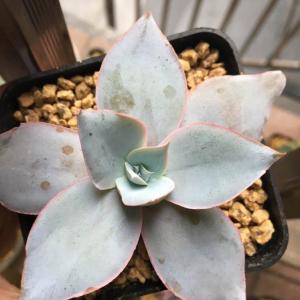文章
Miss Chen
2018年01月10日

Description: This perennial plant is 3-12' tall. Plants in dense colonies are only 3-5' tall, but 'lone wolf' plants can achieve considerable height. The stout central stem is glabrous, glaucous, terete (circular in cross-section), and often reddish or reddish-purple in color. There is very little branching, except for some flowering stems that occur along the upper half of the plant. The leaves are up to 8" long and 2½" across, lanceolate-oblong, and either smooth (entire) or slightly to strongly serrate along their margins. The upper leaf surface is medium to dark green with a sandpapery texture that derives from the presence of minute stiff hairs. The lower leaf surface is pale green and softly hairy. The leaves are often slightly recurved, and they have a tendency to fold upward along their central veins, particularly during hot dry weather. The leaves are opposite below, but they become either alternate or opposite along the upper half of the plant. The leaves taper gradually into slender petioles that are about ½" in length.
The upper stems terminate into either individual or small clusters of flowerheads. Each flowerhead is 2½-4" across, consisting of 10-20 ray florets that surround numerous disk florets. The tiny corollas of the disk florets are tubular-shaped and yellow, while the petaloid rays along the circumference of the flowerhead are bright yellow and oblong in shape. Around the base of each flowerhead, there are floral bracts (phyllaries) that are arranged in several overlapping series. These bracts are light green and linear-lanceolate in shape, becoming slightly recurved when the flowerhead blooms. On a large plant, it is not uncommon for several flowerheads to be bloom at the same time. The blooming period occurs from late summer to fall, lasting about 1-2 months. The disk florets are replaced by achenes about 3-4 mm. in length that are oblongoid and somewhat flattened in shape. The root system is fibrous and rhizomatous, often forming clonal colonies of variable size.
Cultivation: The preference is full sun, moist soil, and fertile loamy soil with high organic content. However, this robust plant will tolerated other kinds of soil. Powdery mildew may affect the leaves, but this typically occurs during the fall after the blooming period. Strong wind can cause this plant to blow over in exposed situations. It also requires lots of room because of its large (sometimes huge) size and aggressive tendencies.

Range & Habitat: The native Sawtooth Sunflower occurs throughout most of Illinois, except for a few SE counties (see Distribution Map). It is a common plant. Habitats include moist to mesic black soil prairies, thickets, moist meadows near rivers or lakes, Bur Oak savannas, bases of bluffs, fence rows, and areas along ditches, railroads, and roadsides. Sawtooth Sunflower thrives in both disturbed and high quality sites, sometimes forming large colonies that exclude other plants.
Faunal Associations: The most common visitors to the flowers are bees, especially long-tongued species. Among these are honeybees, bumblebees, Cuckoo bees (Epeolus spp., Triepeolus spp.), digger bees (Melissodes spp.), and leaf-cutting bees (Megachile spp.). Other insect visitors include Syrphid flies, bee flies, butterflies, moths, and beetles. Both nectar and pollen are available as floral rewards. Other insects feed on the foliage, plant juices, pith of stems, developing seeds, etc., of sunflowers. These insect feeders include caterpillars of the butterflies Chlosyne nycteis (Silvery Checkerspot) and Chlosyne gorgone (Gorgone Checkerspot), stem-boring caterpillars of Papaipema necopina (Sunflower Borer Moth) and Papaipema rigida (Rigid Sunflower Borer Moth), seed-eating caterpillars of the moths Homoeosoma electella (Sunflower Moth) and Stibadium spumosum (Frothy Moth), foliage-eating caterpillars of Grammia arge (Arge Tiger Moth) and Phragmatobia fuliginosa (Ruby Tiger Moth), and many other Lepidoptera (see Lepidoptera Table for a more complete listing of these species).

Other insect feeders of sunflowers include the stem-boring larvae of Apion occidentale (Black Sunflower Weevil) and Cylindrocopturus adspersus (Sunflower Stem Weevil), Physonota helianthi (Sunflower Tortoise Beetle) and Systena blanda (Pale-Striped Flea Beetle), larvae of the flies Neotephritis finalis (Sunflower Seed Maggot) and Strauzia longipennis (Sunflower Maggot), Hesperotettix viridis (Meadow Purple-Striped Grasshopper) and Melanoplus femurrubrum (Red-Legged Grasshopper), Aphis helianthi (Sunflower Aphid) and Uroleucon ambrosiae (Brown Ambrosia Aphid), Clastoptera xanthocephala (Sunflower Spittlebug), and many other insects (see Insect Table for a more complete listing of these species). The seeds of sunflowers are a favorite food of such upland gamebirds and songbirds as the Ring-Necked Pheasant, Bobwhite Quail, Mourning Dove, Redwing Blackbird, Eastern Goldfinch, Lark Sparrow, and Savannah Sparrow. Such rodents as the Franklin Ground Squirrel, Prairie Vole, and Meadow Vole also eat the seeds. These animals probably help to spread the seeds into new areas. When the Sawtooth Sunflower and other sunflowers are located near bodies of water, beavers and muskrats sometimes use their stems to construct dams or lodges. Deer, cattle, and other hoofed mammalian herbivores occasionally browse on the foliage of larger sunflower plants, while groundhogs and rabbits are more likely to attack smaller plants.

Photographic Location: The photographs were taken at the Red Bison Railroad Prairie in Savoy, Illinois, and Meadowbrook Park in Urbana, Illinois.
Comments: Notwithstanding its name, the Sawtooth Sunflower often has leaves that are toothless or only slightly serrated. There is considerable variation in the size of plants across different locations, and the leaves are somewhat variable in their size and shape. This sunflower can be distinguished from other Helianthus spp. (sunflowers) by its smooth reddish stems, which often have a powdery white bloom that can rubbed off (i.e., they are glabrous and glaucous). The lower stems on large older plants can become slightly woody in appearance. The Sawtooth Sunflower is similar in size and appearance to Helianthus giganteus (Giant Sunflower), but this latter species has hairy stems and it is usually found in habitats that are more moist and sandy.
The upper stems terminate into either individual or small clusters of flowerheads. Each flowerhead is 2½-4" across, consisting of 10-20 ray florets that surround numerous disk florets. The tiny corollas of the disk florets are tubular-shaped and yellow, while the petaloid rays along the circumference of the flowerhead are bright yellow and oblong in shape. Around the base of each flowerhead, there are floral bracts (phyllaries) that are arranged in several overlapping series. These bracts are light green and linear-lanceolate in shape, becoming slightly recurved when the flowerhead blooms. On a large plant, it is not uncommon for several flowerheads to be bloom at the same time. The blooming period occurs from late summer to fall, lasting about 1-2 months. The disk florets are replaced by achenes about 3-4 mm. in length that are oblongoid and somewhat flattened in shape. The root system is fibrous and rhizomatous, often forming clonal colonies of variable size.
Cultivation: The preference is full sun, moist soil, and fertile loamy soil with high organic content. However, this robust plant will tolerated other kinds of soil. Powdery mildew may affect the leaves, but this typically occurs during the fall after the blooming period. Strong wind can cause this plant to blow over in exposed situations. It also requires lots of room because of its large (sometimes huge) size and aggressive tendencies.

Range & Habitat: The native Sawtooth Sunflower occurs throughout most of Illinois, except for a few SE counties (see Distribution Map). It is a common plant. Habitats include moist to mesic black soil prairies, thickets, moist meadows near rivers or lakes, Bur Oak savannas, bases of bluffs, fence rows, and areas along ditches, railroads, and roadsides. Sawtooth Sunflower thrives in both disturbed and high quality sites, sometimes forming large colonies that exclude other plants.
Faunal Associations: The most common visitors to the flowers are bees, especially long-tongued species. Among these are honeybees, bumblebees, Cuckoo bees (Epeolus spp., Triepeolus spp.), digger bees (Melissodes spp.), and leaf-cutting bees (Megachile spp.). Other insect visitors include Syrphid flies, bee flies, butterflies, moths, and beetles. Both nectar and pollen are available as floral rewards. Other insects feed on the foliage, plant juices, pith of stems, developing seeds, etc., of sunflowers. These insect feeders include caterpillars of the butterflies Chlosyne nycteis (Silvery Checkerspot) and Chlosyne gorgone (Gorgone Checkerspot), stem-boring caterpillars of Papaipema necopina (Sunflower Borer Moth) and Papaipema rigida (Rigid Sunflower Borer Moth), seed-eating caterpillars of the moths Homoeosoma electella (Sunflower Moth) and Stibadium spumosum (Frothy Moth), foliage-eating caterpillars of Grammia arge (Arge Tiger Moth) and Phragmatobia fuliginosa (Ruby Tiger Moth), and many other Lepidoptera (see Lepidoptera Table for a more complete listing of these species).

Other insect feeders of sunflowers include the stem-boring larvae of Apion occidentale (Black Sunflower Weevil) and Cylindrocopturus adspersus (Sunflower Stem Weevil), Physonota helianthi (Sunflower Tortoise Beetle) and Systena blanda (Pale-Striped Flea Beetle), larvae of the flies Neotephritis finalis (Sunflower Seed Maggot) and Strauzia longipennis (Sunflower Maggot), Hesperotettix viridis (Meadow Purple-Striped Grasshopper) and Melanoplus femurrubrum (Red-Legged Grasshopper), Aphis helianthi (Sunflower Aphid) and Uroleucon ambrosiae (Brown Ambrosia Aphid), Clastoptera xanthocephala (Sunflower Spittlebug), and many other insects (see Insect Table for a more complete listing of these species). The seeds of sunflowers are a favorite food of such upland gamebirds and songbirds as the Ring-Necked Pheasant, Bobwhite Quail, Mourning Dove, Redwing Blackbird, Eastern Goldfinch, Lark Sparrow, and Savannah Sparrow. Such rodents as the Franklin Ground Squirrel, Prairie Vole, and Meadow Vole also eat the seeds. These animals probably help to spread the seeds into new areas. When the Sawtooth Sunflower and other sunflowers are located near bodies of water, beavers and muskrats sometimes use their stems to construct dams or lodges. Deer, cattle, and other hoofed mammalian herbivores occasionally browse on the foliage of larger sunflower plants, while groundhogs and rabbits are more likely to attack smaller plants.

Photographic Location: The photographs were taken at the Red Bison Railroad Prairie in Savoy, Illinois, and Meadowbrook Park in Urbana, Illinois.
Comments: Notwithstanding its name, the Sawtooth Sunflower often has leaves that are toothless or only slightly serrated. There is considerable variation in the size of plants across different locations, and the leaves are somewhat variable in their size and shape. This sunflower can be distinguished from other Helianthus spp. (sunflowers) by its smooth reddish stems, which often have a powdery white bloom that can rubbed off (i.e., they are glabrous and glaucous). The lower stems on large older plants can become slightly woody in appearance. The Sawtooth Sunflower is similar in size and appearance to Helianthus giganteus (Giant Sunflower), but this latter species has hairy stems and it is usually found in habitats that are more moist and sandy.
0
0
文章
Miss Chen
2018年01月10日

Description: This is an annual wildflower with a large and stout central stem about 3-9' tall, although occasionally smaller. Toward the apex of the plant, there may be a few side stems, but it is tall and columnar overall. The central stem is light green to reddish green, terete, and covered with stiff spreading hairs. The large alternate leaves are up to 8" long and 6" across – they have a tendency to droop downward from the long petioles. They are cordate, ovate-cordate, or ovate with fine dentate margins, although some of the small upper leaves may have smooth margins and a lanceolate shape. The upper surface of the leaves is dull green and covered with short stiff hairs, providing it with a sandpapery feel. The petioles are light green to reddish green, and covered with short stiff hairs; the upper surface of each petiole is channeled.
Colony of Blooming Plants
The daisy-like flowerheads consist of numerous central disk florets (each about 1/8" across) that are yellow to brown; they are surrounded by approximately 20-40 ray florets. The petal-like extensions of the ray flowers are yellow. Each flowerhead is about 3-5" across. At the bottom of each flowerhead, there are large overlapping bracts in 2-3 series. These floral bracts are dull green, stiffly hairy, and ovate in shape, tapering abruptly to form long narrow tips. An average plant will bear from 1-12 of these flowerheads, and bloom from mid- to late summer for about 1½ months. There is not much of a fragrance, although the florets have a musty smell that is peculiar to sunflowers. During the fall, the disk florets are replaced by large seeds that are ovoid and somewhat flattened in shapee; they are dispersed by gravity when the tall plants topple over during the winter. Like many other species in its genus, the Annual Sunflower exudes chemicals that kills off other kinds of vegetation. Thus, it has a tendency to form colonies that exclude other plants, particularly in disturbed areas.

Cultivation: The preference is full sun, moist to slightly dry conditions, and a fertile loamy soil. However, this wildflower often thrives in soil with a high clay or gravel content. There is a natural tendency for the lower leaves to shrivel and drop whenever there are extended spells of hot dry weather. Powdery mildew sometimes attacks the leaves during the fall, but this is usually after the plant has finished blooming and is forming seeds. It is easy to start new plants from seeds.
Range & Habitat: The native Annual Sunflower occurs throughout Illinois; it is especially common in the central and northern areas of the state (see Distribution Map). Habitats include disturbed areas of mesic to dry prairies, meadows in wooded areas, cultivated and abandoned fields, pastures, areas along railroads and roads, and urban waste areas. Annual Sunflower may occur sporadically as individual plants, or in small to large colonies that persist year after year. This rather weedy wildflower can be controlled by summer wildfires or periodic mowing.
Faunal Associations: Long-tongued bees are the most important pollinators of the flowers, including the honeybee, bumblebees, digger bees (Melissodes spp.), and leaf-cutting bees (Megachile spp.). Short-tongued bees that are important visitors of the flowers include Halictid bees, alkali bees, and some Andrenid bees. Some bees are specialist pollinators (oligoleges) of sunflowers; the oligolectic bees Andrena accepta, Andrena helianthi, Dufourea marginatus, Melissodes agilis, and Pseudopanurgus rugosus have been observed to visit the flowers of Annual Sunflower. Visitors of lesser importance include bee flies, butterflies, skippers, and the Goldenrod Soldier Beetle (Chauliognathus pennsylvanicus). These insects are searching for nectar and pollen. In addition to these floral visitors, many insects feed on the leaves and other parts of Annual Sunflower (see Insect Table). Because the seeds are abundant, large-sized, and nutritious, they are an attractive food source to many vertebrate animals, including upland gamebirds, songbirds, ground squirrels, tree squirrels, and mice. To some extent, the seeds are distributed by these animals to new locations. Mammalian herbivores, such as rabbits, ground hogs, and deer, often consume the foliage, particularly from young plants. When this sunflower grows near sources of water, muskrats and beavers sometimes eat its stems and other parts; beavers also use the stems in the construction of their lodges and dams.

Photographic Location: The above photographs were taken along a railroad near Champaign, Illinois.
Comments: The Annual Sunflower is thought to be adventive from western United States. However, it was cultivated as a source of food by native Americans, and was likely introduced to Illinois by them prior to European settlement. The cultivated sunflower of modern agriculture is a self-pollinating hybrid of this plant and another annual sunflower that occurs in the Great Plains. Because of its large heart-shaped leaves, it is easy to distinguish the Annual Sunflower from other Helianthus spp. (Sunflowers) that occur in the Midwest.
Colony of Blooming Plants
The daisy-like flowerheads consist of numerous central disk florets (each about 1/8" across) that are yellow to brown; they are surrounded by approximately 20-40 ray florets. The petal-like extensions of the ray flowers are yellow. Each flowerhead is about 3-5" across. At the bottom of each flowerhead, there are large overlapping bracts in 2-3 series. These floral bracts are dull green, stiffly hairy, and ovate in shape, tapering abruptly to form long narrow tips. An average plant will bear from 1-12 of these flowerheads, and bloom from mid- to late summer for about 1½ months. There is not much of a fragrance, although the florets have a musty smell that is peculiar to sunflowers. During the fall, the disk florets are replaced by large seeds that are ovoid and somewhat flattened in shapee; they are dispersed by gravity when the tall plants topple over during the winter. Like many other species in its genus, the Annual Sunflower exudes chemicals that kills off other kinds of vegetation. Thus, it has a tendency to form colonies that exclude other plants, particularly in disturbed areas.

Cultivation: The preference is full sun, moist to slightly dry conditions, and a fertile loamy soil. However, this wildflower often thrives in soil with a high clay or gravel content. There is a natural tendency for the lower leaves to shrivel and drop whenever there are extended spells of hot dry weather. Powdery mildew sometimes attacks the leaves during the fall, but this is usually after the plant has finished blooming and is forming seeds. It is easy to start new plants from seeds.
Range & Habitat: The native Annual Sunflower occurs throughout Illinois; it is especially common in the central and northern areas of the state (see Distribution Map). Habitats include disturbed areas of mesic to dry prairies, meadows in wooded areas, cultivated and abandoned fields, pastures, areas along railroads and roads, and urban waste areas. Annual Sunflower may occur sporadically as individual plants, or in small to large colonies that persist year after year. This rather weedy wildflower can be controlled by summer wildfires or periodic mowing.
Faunal Associations: Long-tongued bees are the most important pollinators of the flowers, including the honeybee, bumblebees, digger bees (Melissodes spp.), and leaf-cutting bees (Megachile spp.). Short-tongued bees that are important visitors of the flowers include Halictid bees, alkali bees, and some Andrenid bees. Some bees are specialist pollinators (oligoleges) of sunflowers; the oligolectic bees Andrena accepta, Andrena helianthi, Dufourea marginatus, Melissodes agilis, and Pseudopanurgus rugosus have been observed to visit the flowers of Annual Sunflower. Visitors of lesser importance include bee flies, butterflies, skippers, and the Goldenrod Soldier Beetle (Chauliognathus pennsylvanicus). These insects are searching for nectar and pollen. In addition to these floral visitors, many insects feed on the leaves and other parts of Annual Sunflower (see Insect Table). Because the seeds are abundant, large-sized, and nutritious, they are an attractive food source to many vertebrate animals, including upland gamebirds, songbirds, ground squirrels, tree squirrels, and mice. To some extent, the seeds are distributed by these animals to new locations. Mammalian herbivores, such as rabbits, ground hogs, and deer, often consume the foliage, particularly from young plants. When this sunflower grows near sources of water, muskrats and beavers sometimes eat its stems and other parts; beavers also use the stems in the construction of their lodges and dams.

Photographic Location: The above photographs were taken along a railroad near Champaign, Illinois.
Comments: The Annual Sunflower is thought to be adventive from western United States. However, it was cultivated as a source of food by native Americans, and was likely introduced to Illinois by them prior to European settlement. The cultivated sunflower of modern agriculture is a self-pollinating hybrid of this plant and another annual sunflower that occurs in the Great Plains. Because of its large heart-shaped leaves, it is easy to distinguish the Annual Sunflower from other Helianthus spp. (Sunflowers) that occur in the Midwest.
0
0
文章
Miss Chen
2018年01月09日

For gardeners new to spring bulbs, daffodils (Narcissus spp.) are a bright gift. Hardy between U.S. Department of Agriculture plant hardiness zones 3 through 10, depending on species, daffodils are less appetizing to winter grazing rodents -- and more reliable perennials -- than many other spring bulbs. They come in a variety of forms and coloration. A well-chosen collection of early-, mid- and late-season varieties will brighten your garden throughout the spring.

Mystery of the Bulb
Daffodil bulbs, like other tunicate bulbs, wear a protective layer of dried skin, or tunic, that helps insulate and keep bulbs moist. The thick layers underneath the tunic anchor this year's plant but also contain the embryo of a succeeding plant, flower and all, and enough nutritious material to keep it healthy until it is time for it to bloom, hopefully next spring. The bulb protects the growing flower from heat, drought and freezing weather.
The bulb never stops growing. It adds layers and processes and stores nutrients year-round. This prepares its hardy little occupant for the vicissitudes of unpredictable spring weather. It might even pop up through the last melting snow if conditions are right.
The Right Conditions
Every daffodil has its own rhythm to follow. Growth responds to daylight and soil temperature. Daffodils come to life when soil temperatures range from 50 to 60 degrees Fahrenheit and as the sun rises and days lengthen. Each year brings a slightly different progression, so bloom times may vary by days or weeks from one year to another.

Early varieties such as February Gold (Narcissus 'February Gold,' USDA zones 4 to 8) and Ice Follies (Narcissus 'Ice Follies,' USDA zones 3 to 8) bloom, as their names suggest, as winter fades into very early spring. Tete-a-Tete (Narcissus 'Tete-a-Tete,' USDA zones 4 to 8) may bloom as early as February in warmer southern zones, but wait until March further north.
Mid-season begins in March in southern zones, but in cooler zones Jack Snipe (Narcissus 'Jack Snipe,' USDA zones 4 to 8), Trevithian (Narcissus 'Trevithian,' USDA zones 5 to 10) and many of the big mid-season trumpet "daffs" bloom throughout April.
Late varieties such as Salome (Narcissus 'Salome,' USDA zones 3 to 9) may bloom as late as mid-May in the north.
About Chilling
Many daffodils depend on winter chilling to keep their bloom time on track. They typically require temperatures between 35 and 48 degrees Fahrenheit for 12 to 18 weeks depending on variety -- not a problem for bulbs planted in fall in northern zones. Gardeners in USDA zone 8 and further south dig and dry bulbs with long chilling requirements after foliage dies down in summer and keep them in cool storage for three to four months before replanting. Gardeners in warmer zones can plant native daffodils such as tazetta daffodils (Narcissus 'Minnow,' USDA zones 5 through 9) that do not require lengthy chilling.
The Prolific Perennial
Daffodils are reliably perennial and will produce daughter bulbs along their bases. Separate these bulbs every two or three years after their foliage has died down in early summer. Just lay bulbs out in cool shade to dry. Pull off the daughter bulbs and plant them in sunny, well-drained soil come fall.

Mystery of the Bulb
Daffodil bulbs, like other tunicate bulbs, wear a protective layer of dried skin, or tunic, that helps insulate and keep bulbs moist. The thick layers underneath the tunic anchor this year's plant but also contain the embryo of a succeeding plant, flower and all, and enough nutritious material to keep it healthy until it is time for it to bloom, hopefully next spring. The bulb protects the growing flower from heat, drought and freezing weather.
The bulb never stops growing. It adds layers and processes and stores nutrients year-round. This prepares its hardy little occupant for the vicissitudes of unpredictable spring weather. It might even pop up through the last melting snow if conditions are right.
The Right Conditions
Every daffodil has its own rhythm to follow. Growth responds to daylight and soil temperature. Daffodils come to life when soil temperatures range from 50 to 60 degrees Fahrenheit and as the sun rises and days lengthen. Each year brings a slightly different progression, so bloom times may vary by days or weeks from one year to another.

Early varieties such as February Gold (Narcissus 'February Gold,' USDA zones 4 to 8) and Ice Follies (Narcissus 'Ice Follies,' USDA zones 3 to 8) bloom, as their names suggest, as winter fades into very early spring. Tete-a-Tete (Narcissus 'Tete-a-Tete,' USDA zones 4 to 8) may bloom as early as February in warmer southern zones, but wait until March further north.
Mid-season begins in March in southern zones, but in cooler zones Jack Snipe (Narcissus 'Jack Snipe,' USDA zones 4 to 8), Trevithian (Narcissus 'Trevithian,' USDA zones 5 to 10) and many of the big mid-season trumpet "daffs" bloom throughout April.
Late varieties such as Salome (Narcissus 'Salome,' USDA zones 3 to 9) may bloom as late as mid-May in the north.
About Chilling
Many daffodils depend on winter chilling to keep their bloom time on track. They typically require temperatures between 35 and 48 degrees Fahrenheit for 12 to 18 weeks depending on variety -- not a problem for bulbs planted in fall in northern zones. Gardeners in USDA zone 8 and further south dig and dry bulbs with long chilling requirements after foliage dies down in summer and keep them in cool storage for three to four months before replanting. Gardeners in warmer zones can plant native daffodils such as tazetta daffodils (Narcissus 'Minnow,' USDA zones 5 through 9) that do not require lengthy chilling.
The Prolific Perennial
Daffodils are reliably perennial and will produce daughter bulbs along their bases. Separate these bulbs every two or three years after their foliage has died down in early summer. Just lay bulbs out in cool shade to dry. Pull off the daughter bulbs and plant them in sunny, well-drained soil come fall.
0
0
文章
Miss Chen
2018年01月08日

Hardy in U.S. Department of Agriculture plant hardiness zones 3 through 8, tulips (Tulipa spp.) are dignified in the garden, standing straight and tall while proudly showing off their distinctive blooms. As cut flowers, however, they tend to twist and turn, as if they want to escape their vases. There's a method to their madness: Tulips continue to grow after being cut, reaching for the light. Keep them lasting longer -- and standing up straighter -- by properly preparing cut tulips for their new home.

Cutting the Stems
Tulip stems should be cut at an angle before you place them in water. About a 1/2 inch should be cut from the bottom of each stem. You can trim the stems of tulips already drooping in a vase, for a quick pick-me-up. Tulip stems grow another inch or so after you place them in water, according to the University of Vermont Extension, so cutting them after they've grown a bit can perk them up.
Replace the Vase
Because they tend to flip and flop as they bend toward the light source, tulips need support. They'll stand upright in a tall, narrow vase, but can also be placed in floral foam for added support in shorter, wider containers. Rotate the container periodically so each side gets equal access to the light to help tulips stand upright.
Freshen the Water
Fresh water is a must for strong, healthy tulips. Remove any leaves that will be below water level, so they don't foul up the water. Use lukewarm water, which has fewer bubbles to clog up the stems, and top off the water each day. The water should be completely replaced about every three or four days. You can also add a floral preservative to the water to help keep tulips standing up straight and living longer.

Prop Them Upright
One way to fix droopy stems is to crowd the container with other flowers and foliage. Choose other spring flowers for a cheerful display, and highlight their colors with deep green foliage. The denser the bouquet, the more sturdily your tulips will be held upright. Or, if you prefer the look of an all-tulip display, try making a little slit in the stem under each bloom, about 1/8 inch long.
Cool Them Down
Tulips are temperate plants -- they prefer cooler temperatures. Keep cut tulips well away from direct sunlight or a heat source, as this will cause them to droop sooner. Perk them up by placing them outside at night when temperatures are cooler but not frigid.

Cutting the Stems
Tulip stems should be cut at an angle before you place them in water. About a 1/2 inch should be cut from the bottom of each stem. You can trim the stems of tulips already drooping in a vase, for a quick pick-me-up. Tulip stems grow another inch or so after you place them in water, according to the University of Vermont Extension, so cutting them after they've grown a bit can perk them up.
Replace the Vase
Because they tend to flip and flop as they bend toward the light source, tulips need support. They'll stand upright in a tall, narrow vase, but can also be placed in floral foam for added support in shorter, wider containers. Rotate the container periodically so each side gets equal access to the light to help tulips stand upright.
Freshen the Water
Fresh water is a must for strong, healthy tulips. Remove any leaves that will be below water level, so they don't foul up the water. Use lukewarm water, which has fewer bubbles to clog up the stems, and top off the water each day. The water should be completely replaced about every three or four days. You can also add a floral preservative to the water to help keep tulips standing up straight and living longer.

Prop Them Upright
One way to fix droopy stems is to crowd the container with other flowers and foliage. Choose other spring flowers for a cheerful display, and highlight their colors with deep green foliage. The denser the bouquet, the more sturdily your tulips will be held upright. Or, if you prefer the look of an all-tulip display, try making a little slit in the stem under each bloom, about 1/8 inch long.
Cool Them Down
Tulips are temperate plants -- they prefer cooler temperatures. Keep cut tulips well away from direct sunlight or a heat source, as this will cause them to droop sooner. Perk them up by placing them outside at night when temperatures are cooler but not frigid.
0
0



